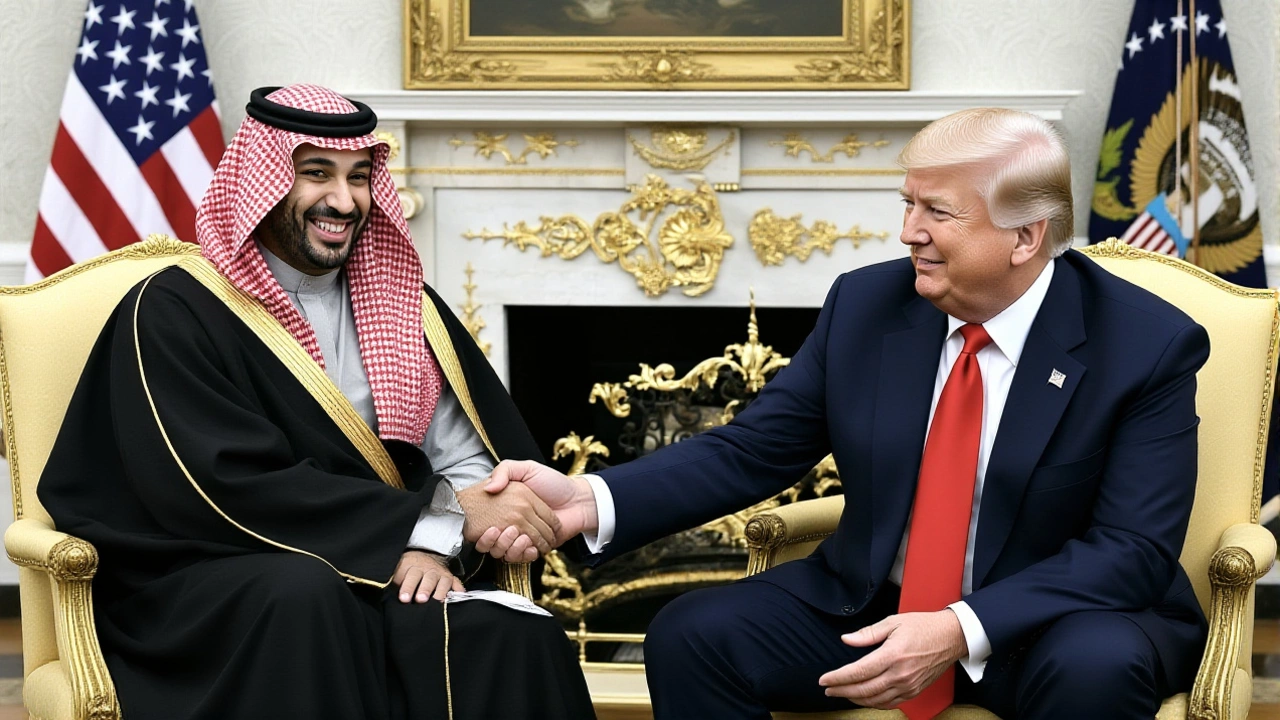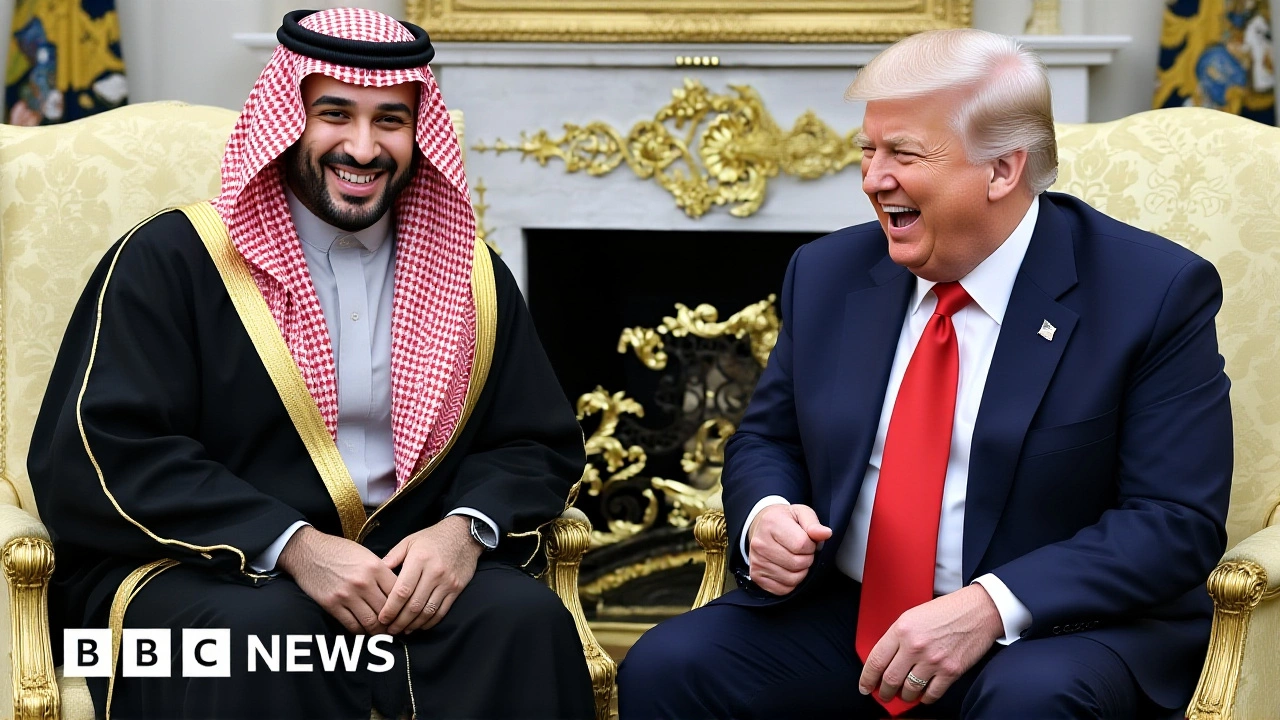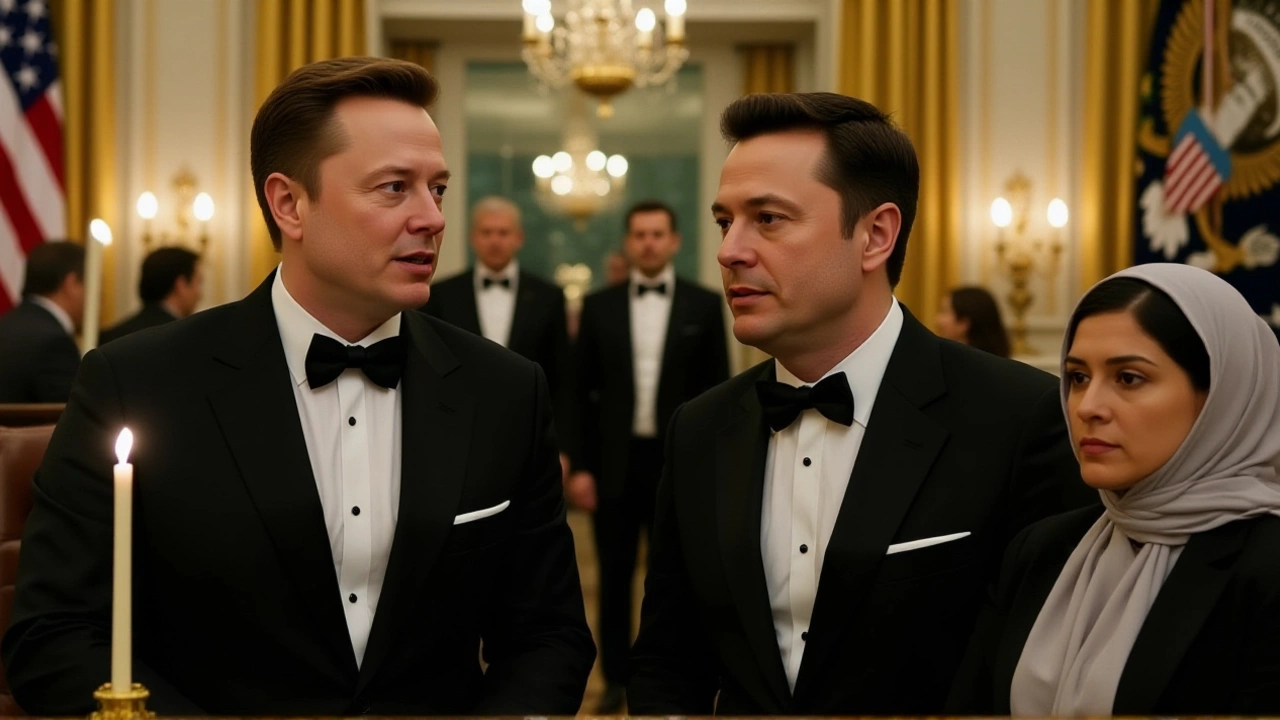When Elon Reeve Musk stepped into the White House on Tuesday, November 18, 2025, for a black-tie dinner with Donald John Trump and Mohammed bin Salman Al Saud, it wasn’t just a social event—it was the quiet end of a three-month political rift that had shaken tech, defense, and global diplomacy. The dinner, held in the historic East Room at 1600 Pennsylvania Avenue NW, Washington, D.C., marked Musk’s first return to the presidential residence since publicly breaking with Trump in June 2025. And yet, the atmosphere was less tense than it had been in months. There were no shouted tweets, no contract threats—just 50 guests, fine wine, and the unmistakable sense that something major was being quietly stitched back together.
A Fractured Alliance, Mended Over Dinner
The split began on June 15, 2025, when Musk publicly denounced Trump’s signature legislative proposal, the ‘big, beautiful bill,’ calling it ‘fiscally reckless and politically tone-deaf.’ Within days, Musk’s criticism turned personal. On June 18, he posted on X: ‘Trump would have lost the 2024 election had it not been for his support. Dems would control the House and Republicans would be 51-49 in the Senate. Such ingratitude.’ Trump responded with a threat: a potential freeze on SpaceX’s $1.8 billion in annual federal contracts and Tesla’s $450 million in Department of Energy loan guarantees. For weeks, the feud dominated headlines. Analysts wondered if Musk’s empire—valued at over $1.2 trillion—could survive a government backlash. But then, on July 1, 2025, Trump posted on Truth Social: ‘The better they do, the better the USA does, and that’s good for all of us.’ He added, bluntly: ‘I want Elon and his companies to THRIVE.’ The shift was subtle but seismic. No apology. No grand gesture. Just those three words. And Musk? He didn’t respond publicly. But he didn’t disappear either.The Saudi Connection: A Strategic Triangle
The reconciliation didn’t happen in a vacuum. Musk had already been building ties with Mohammed bin Salman Al Saud since their meeting in Riyadh on May 13, 2025, during the U.S.-Saudi Investment Forum. That encounter preceded Tesla’s formal market launch in Saudi Arabia on April 15, 2025, at the Bujairi Terrace, where the company unveiled its Cybercab and Optimus robot to a crowd that included Saudi Energy Minister Prince Abdulaziz bin Salman Al Saud. The kingdom, already America’s top arms buyer with $28.7 billion in defense purchases in FY2024, is now negotiating for F-35 fighter jets—a deal Trump has personally endorsed. In the Cabinet Room earlier that same day, Trump told bin Salman: ‘You have the best friend you’ve ever had.’ He referenced Franklin D. Roosevelt’s 1945 meeting with the Crown Prince’s grandfather, King Abdul Aziz, on the USS Quincy—a moment that helped forge the U.S.-Saudi alliance. Now, Trump announced the ‘Board of Peace,’ a new international body he claimed would include ‘the heads of every major country’ and be endorsed by the United Nations, with China’s initial opposition overcome. The formal announcement is set for December 1, 2025, at the UN General Assembly in New York City.
What the Dinner Really Meant
The dinner wasn’t just about smoothing over personal tensions. It was a signal. Musk’s presence signaled that his companies—SpaceX, Tesla, and even X—are now firmly back in the U.S. government’s good graces. For Trump, it was a win: aligning the world’s most influential tech titan with one of its most powerful monarchs. For bin Salman, it was a masterstroke: securing American tech access, defense partnerships, and now, direct access to the Oval Office through a billionaire who speaks both Silicon Valley and Washington fluently. The three men talked past 10 PM, then Trump and bin Salman continued into the Blue Room until 11:30 PM, discussing an Israel-Hamas ceasefire that Trump claimed was ‘far ahead of schedule.’ Musk left at 10:15 PM in his black Tesla Model S Plaid, license plate DC-ELON1, heading to Bethesda. But the message was clear: Musk isn’t just a businessman anymore. He’s a geopolitical player.Behind the Scenes: The Numbers That Matter
- SpaceX received $1.8 billion in federal contracts in 2025, nearly half of NASA’s total launch budget.- Tesla’s sales in the Middle East surged 312% in Q3 2025, with Saudi Arabia accounting for 47% of that growth.
- The U.S. sold $28.7 billion in arms to Saudi Arabia in FY2024, the highest in a single year since 2017.
- Musk’s net worth dipped $12 billion during the June-July feud, then rebounded by $21 billion by October as investor confidence returned.
- The ‘Board of Peace’ initiative, while still undefined, reportedly includes representatives from the U.S., Saudi Arabia, UAE, India, Japan, and the EU—with China still excluded.

What’s Next? The Board of Peace and Beyond
The December 1 announcement in New York will be the next flashpoint. Will the Board of Peace be a diplomatic forum—or a shadow council? Will Musk’s companies be invited to provide AI infrastructure? Will Tesla’s autonomous tech be deployed in peacekeeping zones? The details are still unclear. But one thing is certain: the dinner wasn’t the end of the story. It was the opening chapter.Frequently Asked Questions
Why did Musk and Trump reconcile after their public feud?
Musk’s businesses rely heavily on federal contracts—SpaceX alone gets $1.8 billion annually. After Trump threatened to cut funding in June 2025, Musk likely realized the cost of defiance outweighed the political statement. Trump’s July 1 statement that he wanted Musk to ‘THRIVE’ was the opening. The dinner was the handshake. Both sides needed each other: Musk for government access, Trump for tech credibility and global influence.
What role does Saudi Arabia play in this reconciliation?
Saudi Arabia is the hidden linchpin. With $28.7 billion in U.S. arms purchases last year and Tesla’s rapid market entry, Riyadh has leverage with both Trump and Musk. The Crown Prince’s presence signaled that this wasn’t just a U.S.-Musk reset—it was a three-way alliance. Saudi Arabia benefits from tech access, defense deals, and now, direct access to U.S. foreign policy through Musk’s global platform.
What is the ‘Board of Peace,’ and why does it matter?
Announced by Trump on November 18, 2025, the ‘Board of Peace’ is a proposed international body meant to oversee ceasefires and global stability, with membership from major powers and UN backing. Though details are scarce, its timing—just before the UN General Assembly on December 1—suggests it’s a political tool to position Trump as a peacemaker. Musk’s involvement, even if indirect, could mean AI or communication infrastructure from his companies will underpin its operations.
Could this affect Tesla’s future in the U.S. market?
Absolutely. Tesla’s $450 million in DOE loan guarantees were under threat during the feud. With Musk back in Trump’s circle, those funds are secure. More importantly, the White House dinner signals approval for Tesla’s expansion into federal infrastructure projects—like charging networks for government fleets. It also opens doors for state contracts, especially in conservative states eager to align with Trump’s tech agenda.
Is this a sign of Musk becoming a political power broker?
Yes. Musk has moved beyond being a CEO. He now operates at the intersection of technology, diplomacy, and national security. His ability to move between Silicon Valley, Washington, and Riyadh gives him unique leverage. He’s not a politician, but he can shape policy outcomes—whether through AI, space access, or electric vehicle adoption. This dinner wasn’t just a meal. It was an elevation.
What’s the likelihood of China being included in the Board of Peace?
Unlikely in the near term. Trump explicitly noted China’s initial opposition during the Cabinet Room meeting. With U.S.-China tensions over semiconductors, AI, and Taiwan still high, Beijing’s exclusion appears intentional. The Board may be designed as a Western-aligned coalition, with Saudi Arabia and India as bridge states. China’s absence could make the initiative more symbolic than functional—unless it’s later invited as a condition for global legitimacy.
